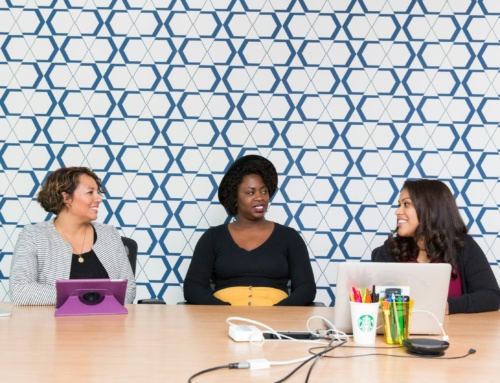With contributions by Stacey Gordon, Rework Work
As the country erupts with racial tension following the death of George Floyd at the hands of police, communities and workplaces have become battlegrounds of debate. The Black Lives Matter movement and protestors seeking justice for George Floyd have been met with resistance and outrage. While what some of these responses show may not be overt racism, it clearly demonstrates the blindness of those who still believe the system is fair and that everyone is treated equally. And because of the overwhelming evidence to the contrary, this bias blindness reveals privilege – they don’t have to see it because it doesn’t affect them.
While companies may be issuing messages decrying the problem, how many are committing to action? And the question for many of them is, what can they do? The fact that they may have affinity groups or employee resource groups or they may have hired someone to lead their diversity & inclusion efforts is the bare minimum. What is being sought is real action and commitment.
Does your Diversity & Inclusion leader have resources? A real budget? Any actual power within your organization or is that person merely seen as a figure head – someone to blame when efforts go awry, as they most certainly will if these questions aren’t answered in the affirmative.
Do your affinity groups/ERGs have the support of the executive leaders? Are allies regularly invited in and do they actively participate? Are the initiatives these groups work on related in any way to the business strategy for the organization? Do they have resources or a real budget that would afford them the opportunity to make a difference? Do the managers within your company see time spent in an ERG as helpful to the organization or time that could be spent working on their department goals? Are leaders being trained to be inclusive or is that just a word?
On an individual level, what can majority group members – like white men and women – do to help?
1. Be informed. It’s really vital that you start with awareness. How informed are you on what is happening in the U.S.? Have you read information from various sources or from the usual suspects? How can you have conversations about diversity when your own views sprout from a place of homogeneity? Take this unconscious bias course on LinkedIn Learning from our colleague, Stacey Gordon of Rework Work. (Free for a limited time)
2. Start by widening your circles and having open dialogue with people who don’t look like you, don’t live in your neighborhood, don’t have the same religion or share the same bathroom. Have conversations with people. Not sure how to have difficult conversations about race? Take this course on Having Race and Gender Conversations.
3. Commit to D&I for real and for the long-term. Take action. Don’t just check the box. Change the system (well, one step at a time). The meritocracy doesn’t work and fixing it will require everyone to change. It’s time to take apart the structure at the seams. Read our white paper and speak with one of our consultants. Start. Just do something that will last and make this time matter.
Learn how to address current workplace challenges during this challenging work-from-home period. Our Leadership & Organizational Development for the Pandemic offers virtual synchronous workshops tailored for your organization. Contact Us to learn more.
Contact Us




